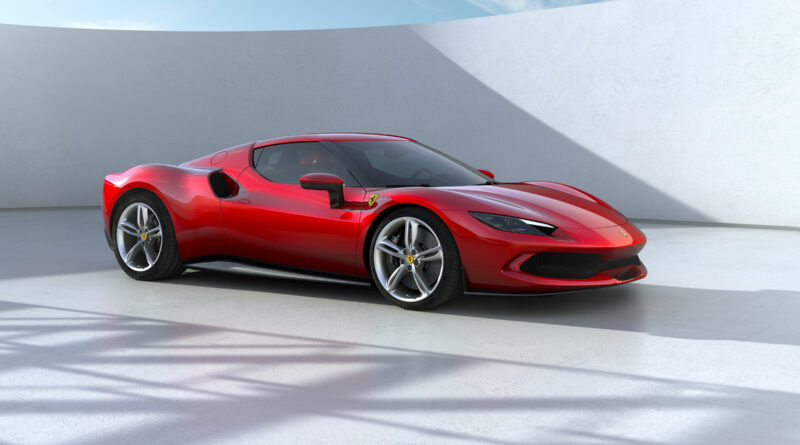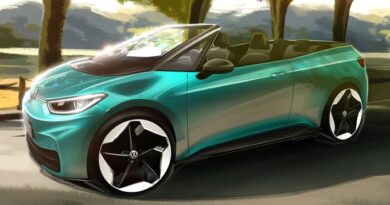Ferrari unleashes 296 GTB sports car with new V6 PHEV
- First Ferrari-badged V6 road car
- 610kW/740Nm from new 2.9-litre V6 mated to 122kW/315Nm e-motor
- 25km EV range
- On sale in 2022
Ferrari has added an all-new two-seat mid-engined plug-in hybrid sports car to its growing line-up in the form of the 296 GTB.
And it has an all-new 2.9-litre V6 engine with a wide 120-degree construction that places its two turbos in the V as part of a plug-in hybrid (PHEV) system.
There’s also a single 122kW/315Nm electric motor combining with the V6 to drive the rear wheels through an eight-speed twin-clutch transmission.
Want the latest EV news and reviews delivered to your inbox? Subscribe to our weekly newsletter!
The maximum combined power and torque outputs are 610kW and 740Nm.
Ferrari claims the 296 GTB will hit 100km/h in 2.9 seconds, 200km/h in 7.3 seconds and reach a top speed north of 330km/h.

Its claimed lap time around Ferrari’s famed Fiorano test track is 1 minute, 21 seconds, making it quicker than the F8 Tributo currently on sale.
The 296 GTB is the third mid-engined two-seater in the Ferrari line-up, neatly slotting between the F8 Tributo/Spider and the SF90 Stradale/Spider.
The fact it is powered by a V6 – rather than the V8s in the F8 and SF90 – gives an indication of the direction Ferrari is likely to move with future models.
Due on sale in Europe early in 2022, the 296 GTB will likely arrive in Australia later next year.
The all-new 296 GTB is the first Ferrari road car to have a V6 engine (see below) and teams it with a plug-in hybrid system to provide better performance than a V8.
The PHEV has a 7.45kWh (gross capacity) battery pack sitting low in the floor and can travel up to 25km on electricity alone, at speeds up to 135km/h.
Describing it as “a totally new car” riding on a new aluminium architecture that has a wheelbase 50mm shorter than the mid-engined F8, the 296 GTB focused on lightweight construction and materials – including some carbon fibre components – to offset the additional weight of the hybrid system.
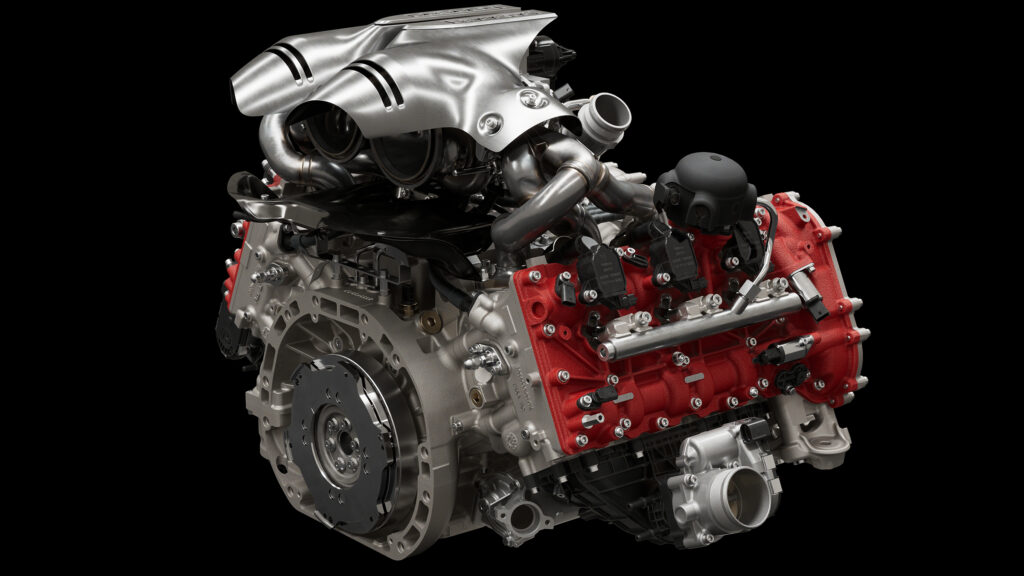
The electric motor weighs 22kg and the battery pack – a slightly smaller version of that used in the SF90 Stradale – weighs 77kg.
The 296 GTB is the second hybrid currently offered by Ferrari, albeit well below the SF90 Stradale (and SF90 Spider) in the performance pecking order.
But, significantly, the 296 GTB will sit above the V8-powered F8 Tributo, which is priced from $484,888.
Developed under the codename F171, the new 296 GTB gets its name from the 2.9-litre V6 and the classic Italian label Gran Turismo Berlinetta.
READ MORE: Secrets of the Ferrari SF90 Stradale
DRIVEN: Ferrari’s first rechargable car: SF90 Stradale
Given the anticipated pricing – likely somewhere approaching $600,000 – the 296 GTB doesn’t have many logical direct competitors, and none within the PHEV space.
The closest car in concept is the soon-to-arrive McLaren Artura, which makes 500kW/720Nm from a 3.0-litre twin-turbo V6 matched to a 70kW/225Nm electric motor.
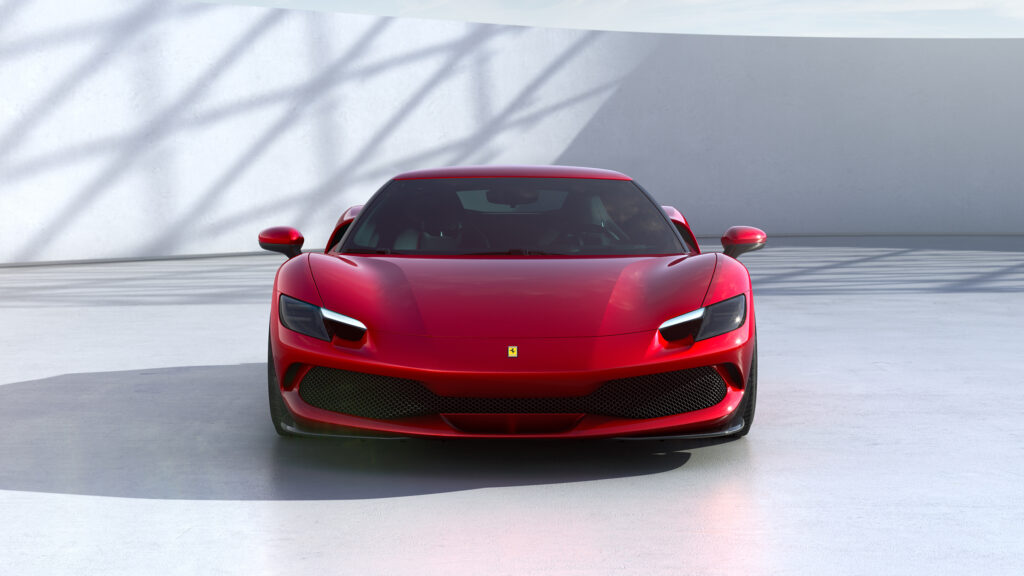
Arch rival Lamborghini has also announced an ambitious electrification program for every model to have a hybrid option by 2024 and for a full EV Lamborghini by the end of the decade.
296 GTB smaller but oozing Italian style
Ferrari hasn’t made many styling stumbles in recent years and the 296 GTB continues the run.
Classic mid-engined proportions are topped off with elegant details and a clean, beautifully crafted shape.
Air intakes alongside the headlights and ahead of the heavily scultped rear wheel arches – which seem to have been inspired by the legendary 250 Le Mans – provide the necessary cooling and air intake for the engine.
Even the central dual exhaust pipe has an elegant beauty that could only come from Ferrari.
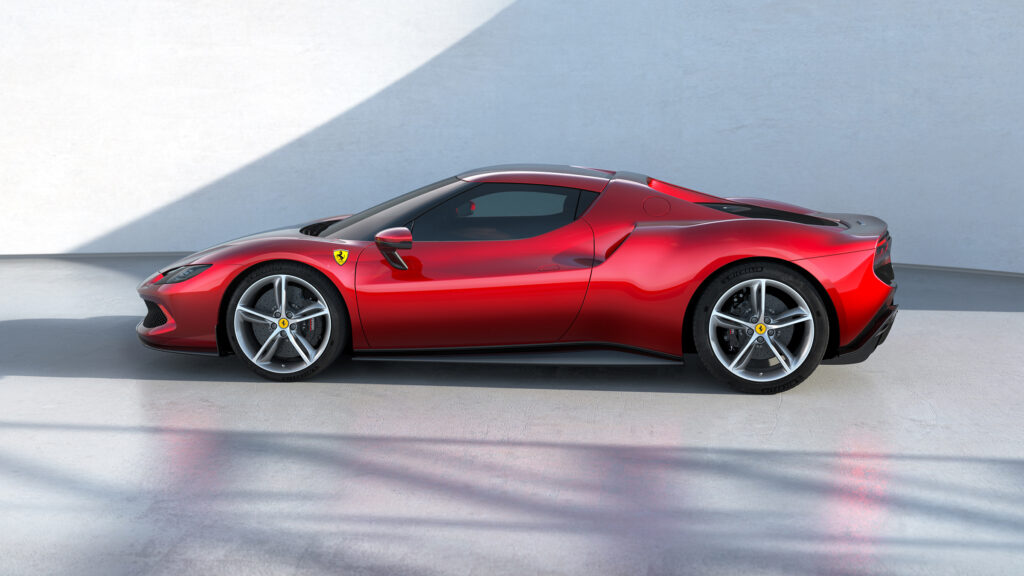
The 296 GTB also gets a fuel filler cap on one side and a matching charging plug door on the other.
But Ferrari has also paid particular attention to aerodynamics, with the new car generating 360kg of downforce at 250km/h.
An active spoiler in the front bumper – similar to that first used on the LaFerrari hypercar – can be deployed to maximise downforce to increase grip.
Inside, there’s a fully digital instrument cluster, albeit one that can display the classic Ferrari circular tachometer in its centre.
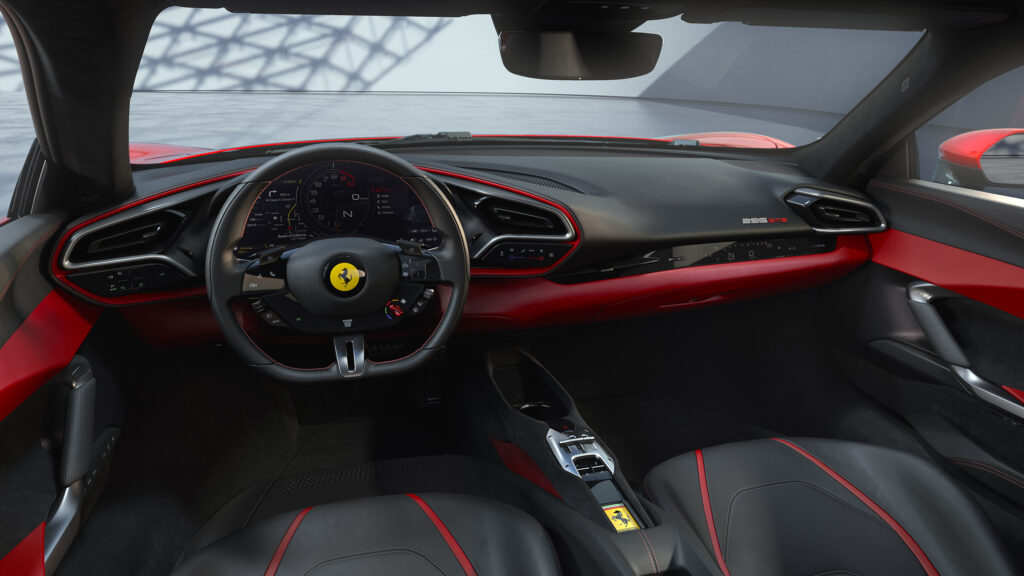
The busy F1-inspired steering wheel includes an eManettino switch that allows quick selection of four drive modes:
– eDrive: for up to 25km of electric driving, albeit with reduced performance
– Hybrid: the default mode that uses the electric motor and/or V6 engine depending on conditions
– Performance: always uses the V6 engine but calls on e-motor assistance to maximise performance
– Qualify: maximum performance, but at the expense of battery charge
Assetto Fiorano steps up 296 GTB performance
Those wanting more can choose the Assetto Fiorano pack.
Borrowing the name of Ferrari’s Fiorano test track, the Assetto Fiorano steps up the 296 GTB’s performance with some subtle but significant changes.
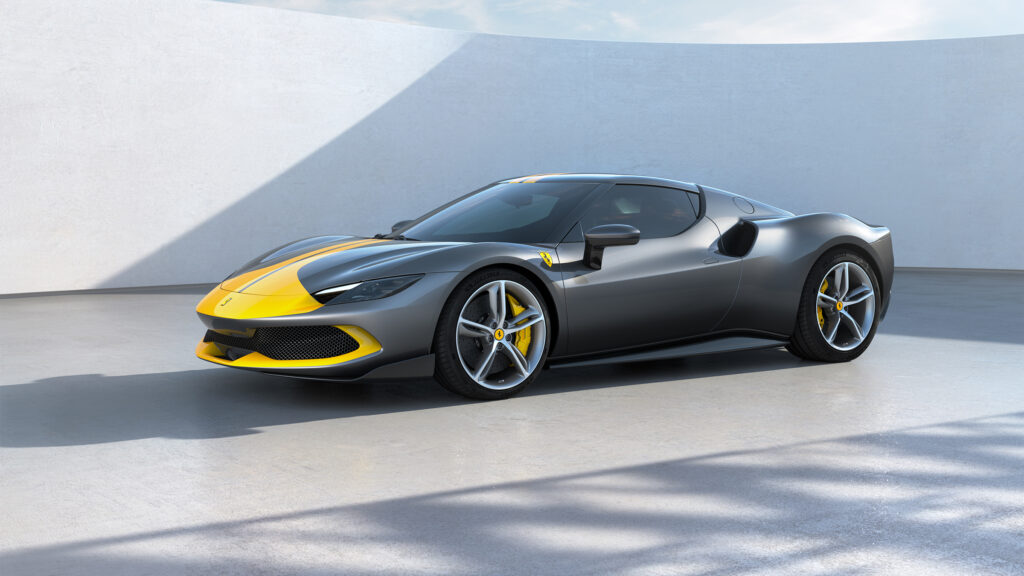
These includes Multimatic adjustable shock absorbers inspired by GT race cars.
Weight savings totalling 15kg are realised by using a Lexan (plastic) rear windscreen and replacing the door panels with lighter materials. There’s also a unique carbon fibre addition to the front bumper for an additional 10kg of downforce.
Tyres are grippier Michelin Sport Cup 2 R designed for more serious racetrack running.
Like the regular model, it can also be optioned with carbon-fibre wheels for a further 8kg weight reduction.
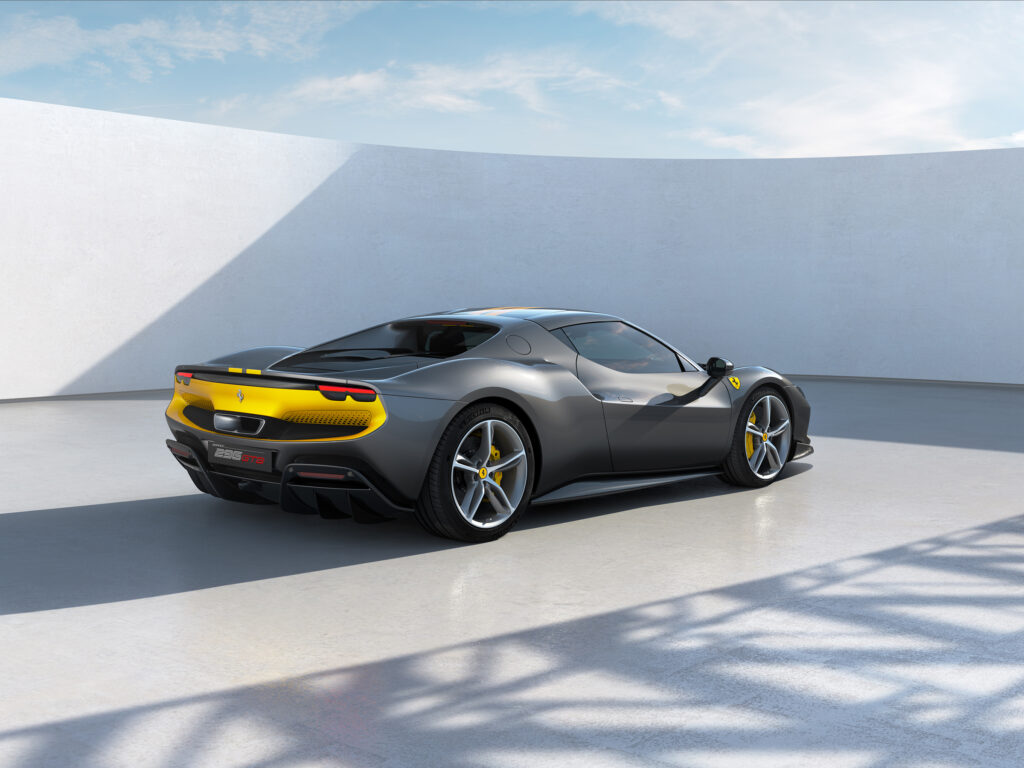
And those wanting to complete the look can option a special Assetto Fiorano colour scheme inspired by the 250 Le Mans.
Hybrid system borrows from SF90
The hybrid system in the 296 GTB shares plenty with the SF90, although there are big differences, too.
In the SF90 there are two electric motors powering the front wheels as well as an electric motor assisting the engine driving the rear wheels.
The 296 GTB only gets one electric motor driving the rear wheels. As in the SF90 it’s referred to as the MGU-K, or Motor Generator Unit, Kinetic – in reference to the set-up used in Formula 1.
The 296 GTB’s e-motor makes less power than the rear motor in the SF90 (122kW versus 150kW) but it makes more torque (315Nm versus 266Nm) as a result of an “improved design”.
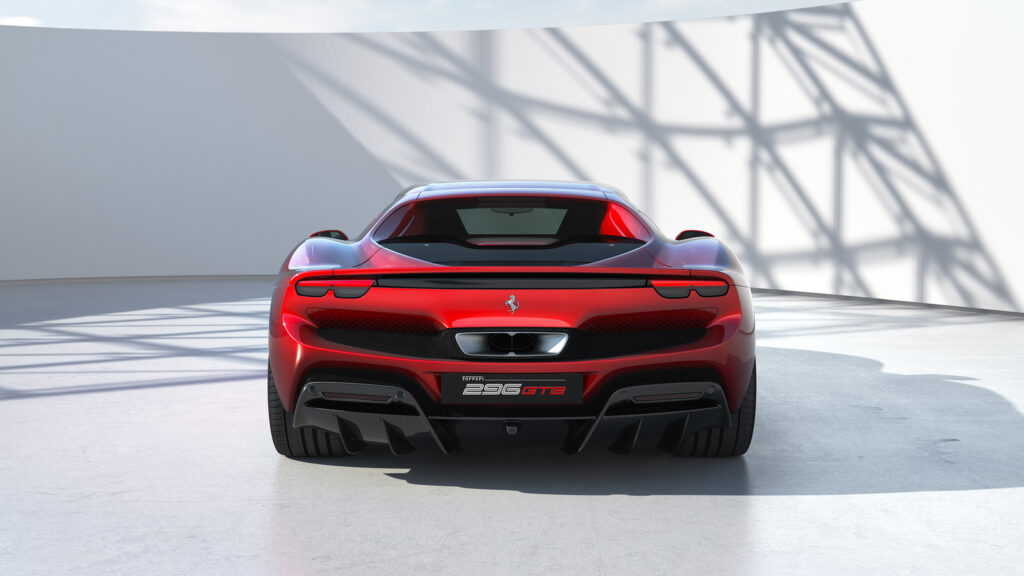
The two also share an eight-speed twin-clutch gearbox to transfer power to the road.
However, whereas the SF90 doesn’t bother with a reverse gear – instead using its dual front electric motors to make the car go backwards – for the 296 GTB a more traditional reverse gear has been added.
The two also share the same battery cells, although the 296 GTB uses 80 cells (four fewer than the SF90).
Hybrid a step to full EV for Ferrari
Ferrari has already confirmed it will produce a pure EV by 2025.
As a publicly listed company, the brand was under intense pressure from investors to follow the trend towards pure electric motoring, something that also brings the promise of better performance.
At Ferrari’s annual general meeting earlier this year, boss John Elkann confirmed the company was working on an EV.
But he was adamant the imminent new model would be “100 percent in the DNA of Ferrari”, which creates quite a challenge given the aural character that V8 and V12 engines have traditionally brought to the Italian supercar maker.
“Our interpretation and application of these technologies both in motorsport and in road cars is a huge opportunity to bring the uniqueness and passion of Ferrari to new generations,” Elkann said at the time.
Ferrari knows a bit about V6s…
Ferrari has never released a road car with a Ferrari badge that was powered by a V6 engine.
The legendary Dino was built by Ferrari but it had Dino badges, not the prancing horse.
Despite the similarities with the number of cylinders in the engine of the 296 GTB, Ferrari says the new car is not a modern Dino, arguing it doesn’t make the same compromises on space, size, performance – and price.
But Ferrari’s V6 interests flow through to the modern era.
Ferrari engineers were poached by former sister brand Alfa Romeo to build the terrific 2.9-litre V6 twin-turbo engine (no relation to that in the 296 GTB) in the Giulia and Stelvio QV (or Quadrifoglio Verde).
And, of course, Ferrari has plenty of experience with V6s with its current F1 cars, which have a V6 hybrid system.
Ferrari’s not saying anything for now, but it’s an odds-on bet the new V6 hybrid system will make an appearance in one or more other Ferrari models in future.
Ferrari 296 GTB specifications
Price: $600,000 (estimated)
On sale: 2022
Basics: PHEV, 2 seats, 2 doors, mid-engined sports car, RWD
EV range: 25km
Battery capacity: 7.45kWh (gross)
Petrol engine: 2.9-litre twin-turbo V6
Electric motor: 122kW/315Nm driving the rear wheels
Transmission: 8-speed twin-clutch auto
AC charging: TBA
DC charging: NA
0-100km/h: 2.9 seconds
0-200km/h: 7.3 seconds
Top speed: more than 330km/h

